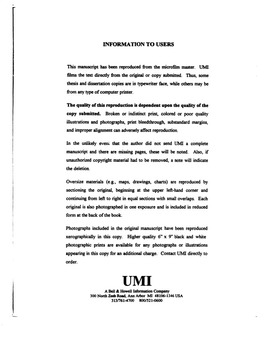| dc.contributor.author | Gray, Elizabeth A. | en_US |
| dc.date.accessioned | 2013-08-16T12:29:55Z | |
| dc.date.available | 2013-08-16T12:29:55Z | |
| dc.date.issued | 1998 | en_US |
| dc.identifier.uri | https://hdl.handle.net/11244/5576 | |
| dc.description.abstract | Newman, Gray, and Fuqua (1996) observed that definitions of sociotropy and autonomy, as well as specific items on the SAS, appear to overlap in some fundamental ways with definitions of femininity and masculinity. In a preliminary exploration of this potential relationship, subscale scores from the SAS were factor analyzed along with four instruments designed to measure sex-role orientation. This analysis resulted in a two-factor solution. The first factor clearly represented a feminine dimension, the second a masculine dimension. Sociotropy loaded cleanly on the feminine dimension, while autonomy loaded cleanly on the masculine dimension. | en_US |
| dc.description.abstract | Women are diagnosed with depression, on average, twice as often as men. Over the years, research has failed to satisfactorily explain the etiology of this sex differential. One particular line of research that has emerged in recent years has focused on the apparent overlap between depressive symptomatology and definitions of feminine sex role. | en_US |
| dc.description.abstract | The purpose of this study was to expand the Newman et al. study by examining the underlying structure of Beck's (1983) Sociotropy/Autonomy Scale (SAS) and exploring the relationships of these dimensions to gender identity and depression. The 60 items of the SAS were factor analyzed resulting in a six-factor solution accounting for 38.2% of the variance. | en_US |
| dc.description.abstract | Interestingly, Beck (1983), a leading researcher in the area of depression and cognition has hypothesized that two cognitive personality structures, sociotropy and autonomy, act as predispositional variables in depression. According to Beck (1983), women are more likely to develop sociotropic structures, while men more likely to develop autonomous structures. Beck has operationalized these constructs in his Sociotropy/Autonomy Scale (SAS). Research examining the SAS has generally supported sociotropy as a vulnerability factor in depression. On the other hand, support for autonomy as a predispositional variable in depression has been sparse; and, in fact, it has been suggested that autonomy may act as a buffer against depression. | en_US |
| dc.description.abstract | These findings raise serious questions regarding the structural validity of the SAS. Further, the apparent overlap involving gender identity and depression evokes concerns that women are being pathologized for exhibiting behaviors that are consistent with normal socialized role prescriptions. | en_US |
| dc.description.abstract | Factor scores were generated for participants on the SAS factors, which were then used in separate multiple regression analyses predicting masculinity and femininity, as measured by the Personal Attributes Scale (PAQ) and the Bem Sex Role Inventory (BSRI), and depression, as measured by the Beck Depression Inventory (BDI). Regression equations emerging from these analyses predicted masculinity and femininity approximately equally well. Surprisingly, the linear combination of SAS factors accounted for less variance in depression than in either masculinity or femininity. | en_US |
| dc.format.extent | viii, 135 leaves ; | en_US |
| dc.subject | Psychology, Cognitive. | en_US |
| dc.subject | Personality. | en_US |
| dc.subject | Sex role. | en_US |
| dc.subject | Psychology, Personality. | en_US |
| dc.subject | Psychology, Clinical. | en_US |
| dc.subject | Depression, Mental. | en_US |
| dc.subject | Women's Studies. | en_US |
| dc.subject | Education, Guidance and Counseling. | en_US |
| dc.title | The relationship of structural components of sociotropy and autonomy with gender identity and depression. | en_US |
| dc.type | Thesis | en_US |
| dc.thesis.degree | Ph.D. | en_US |
| dc.thesis.degreeDiscipline | Department of Educational Psychology | en_US |
| dc.note | Source: Dissertation Abstracts International, Volume: 58-12, Section: A, page: 4566. | en_US |
| ou.identifier | (UMI)AAI9817708 | en_US |
| ou.group | Jeannine Rainbolt College of Education::Department of Educational Psychology | |
